Do you want to gain amazing health benefits from a diet, successfully lose weight, and potentially reverse chronic illnesses? If so, a high fat low carb ketogenic diet can help. Add intermittent fasting to the mix, and you will get stunning and superior scientific results.
Other names that people have given to the ketogenic diet: Keto diet, ketones diet, ketone diet, kito diet, or kido diet (big smiles for that). I’ve seen it also written as ketodiet, but everybody’s really talking about the same thing.
*Please note: This post contains affiliate links. Several links in this post will take you to Amazon.com or to other sites where you can find out additional information about some of the products mentioned here, read reviews, and check out prices.
Post Contents
What Is A Ketogenic Diet Plan?
In the book Keto Clarity, Dr. Eric Westman and Jimmy Moore talk about the importance of ketosis, a metabolic state where the body burns fat for energy instead of traditional carbohydrates to help it heal and maintain a healthy weight.
Fat is not the enemy.
The EXCESSIVE combination of Carbs + fat is!

A temporary state of ketosis can help you lose weight. Ketogenic eating is no longer for weight loss, but it’s also for overall wellness. It can help you wade off major chronic illnesses and diseases.
But the question is: Can a ketosis diet suit you?
This all depends… This diet is not for everybody.
As far as the history of the keto diet, it was used in the early 1900’s to treat people with Type 1 diabetes. That was before the age of insulin injections.
The ketogenic lifestyle was also used in the 1920’s to treat children with epilepsy.
The Dangers Of Combining Carbohydrates (Sugars) With Fats
What do the ketogenic diet and the Japanese diet have in common?
The keto lifestyle diet limits the carb intake to a minimum while increasing the fat intake to a maximum. The Japanese diet limits the fat intake to a minimum while increasing the carb intake to a maximum.
So, technically, both diets are opposite, but they are valid and they both work. This is because both limit some nutrients while increasing others without combining both carbs in high amounts.
On average, Americans consume about 350 grams of carbs per day. The fat intake is also very high, making this combination a disaster.
This was noted in the study published at Penn State University, titled “What are Americans eating and how we can cope?”
A combination of fats with high amounts of carbohydrates is a sure formula to keep you sick and fat for the rest of your life.
The Centers for Disease Control and Prevention (CDC) lists some of these bad conditions that result from eating too much carbohydrates. This is usually the case when carbs are also mixed with a lot of fats.
This type of diet is the Standard American Diet, or SAD, and it’s making people fat and sick.
Here are some diseases that have become chronic since processed foods that are high in carbs and fats became the norm in America.
– Obesity.
– Type 2 diabetes.
– Heart disease.
– High blood pressure.
– Gallbladder.
– Liver disease.
– Osteoarthritis.
– Sleep apnea.
– Infertility.
– Colon, breast, and endometrial cancers.
A diet that includes good fats, low carbohydrates, medium protein, as well as a regimen of intermittent fasting to allow the body to heal, will help fight all these diseases.
The Case Supporting A Diet High In Good Fats And Low In Carbs
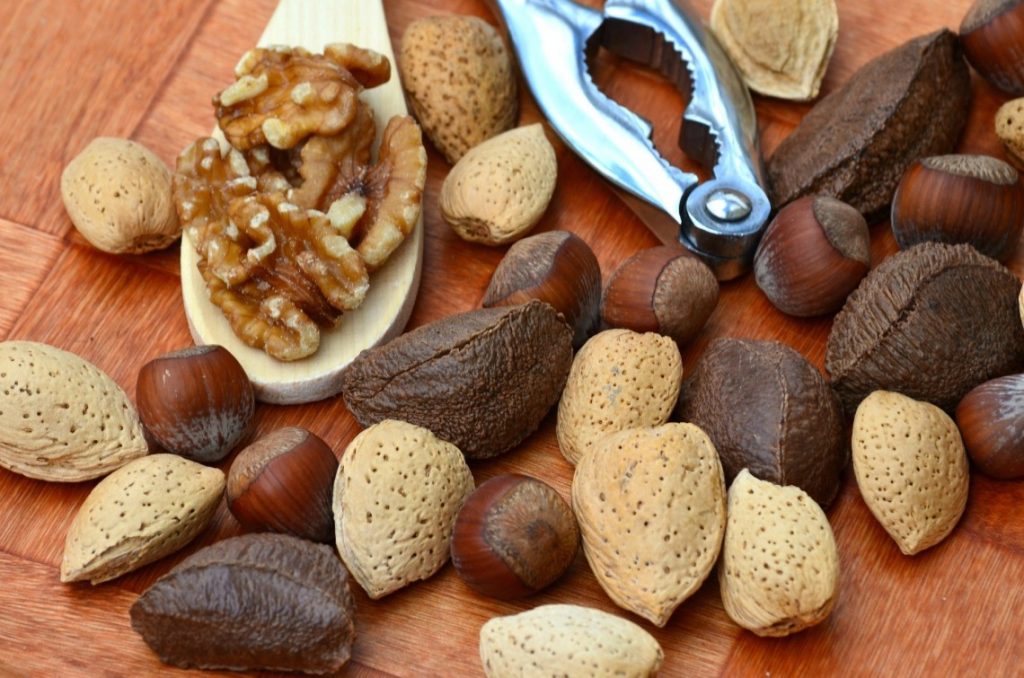 Here are the keto diet basics: Are you willing to stick to a low carbohydrates, high fat diet plan, and medium protein food intake?
Here are the keto diet basics: Are you willing to stick to a low carbohydrates, high fat diet plan, and medium protein food intake?
If you are addicted to sugar, and you’re not willing to do the work, then this diet is probably not for you.
However, if you’re willing to lose weight effortlessly, and heal your chronic ailments, then you should spend some time to do a bit of research on what to eat on the ketogenic diet, because this diet will be perfect for you.
You will need to go through a radical diet change while embracing butter, olives, olive oil, avocado oil, coconut oil, fats from nuts and seeds, and other good sources of fat. You will need to stop the intake of junky carbohydrates and excessive protein found in bad products.
Stop eating highly processed protein products full of harmful chemicals and replace them with a clean form of protein from eggs, grass fed meats, poultry, fish, and vegetables.

As far as fruits, they can work, but in very small amounts.
The lowest amounts of carbohydrates that are found in fruits are in berries (such as blueberries), and of course, the almighty avocado! Be sure to check out our post on the health benefits of avocados, a perfect keto food. While on a ketogenic diet, carbs matter, so choose wisely.
If you do this, you will not only lose massive amounts of weight, but you will also reap the health benefits of a long and youthful life. All has to be done scientifically and in the right amounts, though.
Some people stay on keto for life and every day, and others, especially athletes, follow a cyclical ketogenic diet, or a carb-cycling diet. These ketogenic diets can be as valid as the regular keto diet.
The various types of cyclical keto diets can be a bit more complex and they’re not suggested for beginners.
These athletes may do low carb high fat foods for 5 days a week. For 2 days out of the week (not consecutively), they get to have a higher intake of carbs, making the ketogenic diet a more manageable way of life. They eat a full day of high carbohydrates so that they can get the glycogen refilled in their muscles.
The Case Against Low Fat Diets With Caloric Deficit
The ketogenic diet explained in a few words… The ketogenic diet can have a positive effect on the wellness of the mind and the body without using prescription drugs.
Excessive workouts are not necessary. The keto diet beats a low fat, low calories diet in terms of overall wellness and permanent weight loss.
“Let food be thy medicine and medicine be thy food”. (Hippocrates, father of medicine, 431 B.C.)
Perhaps the most renowned work on the subject was the case studies done for treating epilepsy in children and in adults.
There are other types of diets that we hear about all the time. Some are bad, and some are horrible! The bad ones have all the prepackaged foods that are full of chemicals and junk. We’re not going to mention those in this post, but you know which ones they are.

If you eat processed “low calories, low fat” foods, then you are not doing your body a favor because you’re most likely loading up on the carbs and the sugars.
Dr. Robert Lustig explains this all in his New York Times bestseller Fat Chance, Beating the Odds Against Sugar, Processed Food, Obesity, and Disease.
Perhaps the best review of this book came from none other than Gary Taubes, author of “Good Calories, Bad Calories” and “why We Get Fat”. He said: “No scientist has done more in the last fifty years to alert Americans to the potential dangers of sugar in the diet than Dr. Robert Lustig.”
The push and pull debates over severely limiting calories to non-fat foods (on one side) and eating good fats and lowering carbohydrates (on the other side) started a few years ago.
Do you all remember the TV show “The Biggest Loser”? People lost massive amounts of weight on a miniscule intake of calories and low fats, while exercising for hours without end each day.
The weight loss was mostly temporary as many of the candidates were always hungry (or shall we say hangry).
The debate that comes to mind is that between TV star Jillian Michaels of “The Biggest Loser” (advocate of severe caloric deficit & low fat foods) and Harvard physics graduate Gary Taubes (science writer, and advocate of a low carb ketogenic diet, high fat foods).
They debated their views on National TV, and it was an eye opener.

Although it might be easy to exercise for 8 hours, cut calories and eat low fat foods to lose weight, but it’s not easy to really lose visceral fat, keep the weight off, and reverse chronic illnesses.
Per The National Institute of Health, the “a calorie is a calorie” way of thinking (meaning eating low fat foods and limiting calories to lose weight) violates the 2nd law of thermodynamics.
The study concluded the following:
“Attacking the obesity epidemic will involve giving up many old ideas that have not been productive. ‘A calorie is a calorie’ might be a good place to start.”
It appears that throughout the years, we were fed a bunch of really bad science: Restricting calories, exercising excessively (which makes you hungry), and eating low fat foods is, after all, not a good way to maintain health and to lose permanent weight. It simply doesn’t scientifically add up.
Something else plays a role, and that’s the combination of eating a high amount of carbohydrates and mixing it all up with fats. Unless you fix this combination, you will continue to gain weight and get sick.
Inflammation Is The Problem
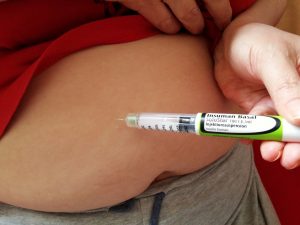 The reason people die of heart attacks more than ever before is because of the excess sugar in their blood, not just cholesterol.
The reason people die of heart attacks more than ever before is because of the excess sugar in their blood, not just cholesterol.
An excess amount of sugar causes constant insulin spike and inflammation. This eventually inflames the arterial walls of the heart. Cholesterol is a natural healing agent that rushes to the arterial wall to heal this inflammation.
As long as there’s inflammation, the body will try to heal itself. But when the sugar intake continues in high doses, causing even MORE inflammation, the plaque builds up in the arterial wall with the intention to heal the inflammation with the cholesterol agent, but it ends up building too much, and this is when heart attacks occur.
Without inflammation in the body, there’s absolutely no reason for cholesterol to be present in the arteries. So, what causes inflammation? Sugar. It’s s the bad inflammatory culprit, not fat.
We die without cholesterol. It is absolutely necessary for the body to survive.
A body with zero cholesterol has no movement, no making babies, no cells, no memory, no bone structure, no hormones, no sex, no digestion, no brain function, no muscles, and no nerve endings. A body with zero cholesterol has no life.
The brain needs cholesterol, and it’s actually made of the same substance. In fact, 25% of the cholesterol in the body is housed in the brain.
This is why a diet with low fat and high sugar is bad for the brain.
This is also why the connection between diabetes (blood glucose is too high in the body) and Alzheimer’s disease is finally making alarming headlines related to diabetes.
A diet high in fat and low in carbs will make your brain function at a much higher capacity and clarity.
The ketogenic diet can reverse the following conditions: Metabolic syndrome, insulin resistance, sleep apnea, and fatty liver.
Being in ketosis doesn’t have to be a way of life forever and ever, but it can be super beneficial and healing if done once in a while.
How Did We Get Here?
Pneumonia was the number one cause of death back in early 1900’s. There were no alarming heart diseases back then, and our ancestors ate a lot of fat with their food.
It didn’t take long for heart disease to show its ugly face in the U.S. and around the world.
Heart disease took center stage when people fell in love with sugary and processed foods and drinks. All of a sudden, sugar was everywhere! From Coca Cola (launched in 1892) to Tootsie Roll Candy (1896), sugary treats were being produced in massive quantities and marketed aggressively. People loved their sweet tooth.
After the 1900’s, the combination of people’s old ways of eating fats and new ways of eating sugars was the culprit in increasing the alarming rates of heart disease in America.
It didn’t take the world much longer to join the line of the sick and dying. This new way of eating created a lot of chronic illnesses, such as high cholesterol, diabetes, fatty liver, and many others.
For the longest time, people were convinced that “low fat” is the key to a healthy lifestyle. But low fat only made people sicker and more obese, only because their consumption of processed carbohydrates continued to rise.
What To Eat On A Ketogenic Diet?
Keto made easy: If you want to simplify things, you can buy information, such as keto books that provide simple keto meals, or educate yourself by searching for information on the internet and fast tracking your way into losing weight and feeling better. These books can vary from keto for beginners to complex keto using cycling and carb loading.
Be aware that the science behind the keto diet says that the fat amount has to be much higher than the protein amount (moderate intake). The fat amount has to also be considerably higher than the carbohydrate intake, which should be at minimum.
You will need 75% of your caloric intake to come from fats, 20% from protein, and 5% from carbs (no more than 50 grams per day)… plus or minus a small percentage here and there.
This is not the Atkins diet that advocates an unlimited amount of meats and protein.
Too much protein is not good for the body, as it can turn into fat, and it can trigger metabolic acidosis. According to the American Society of Nutritional Sciences, metabolic acidosis has very bad consequences on the body. This can occur when the body has way too much acid or when the kidneys cannot normally process and remove the acid.
To count your macronutrients, you can download the app Cronometer, or use any of the available apps, such as MyFitnessPal, or LoseIt.
Cronometer is a paid product, and can cost a few bucks.
It has accurate data, but sometimes I find it hard to navigate. LoseIt is another good app and you can download it for free, but it has ads.
I have used both, and some say that Cronometer has the more accurate data, but I haven’t been able to confirm that.
The nutrients shown here are mine on a strict carb day. On most days, I consume about 50 grams of carbs, and on some days I may go up to 100 grams.
Just think about this alarming fact: About 350 grams of carbs is consumed daily by the average American on the Standard American Diet (SAD).
The interface in LoseIt is really great to keep track of your daily weight. I’m not familiar with MyFitnessPal, so I can’t really give any feedback on that.
Either way, you want to use an app to keep a diary of what you eat, your weight, and your nutrients.
You may want to supplement your body with the nutrients that you’re missing, i.e. a multivitamin, or a fiber supplement, etc.
You may want to supplement your body with the nutrients that you’re missing, i.e. a keto friendly multivitamin, or a fiber supplement.
There are many fiber supplements on the market to help you with digestive inconsistency.
Psyllium Husk is a good keto friendly fiber supplement to get the fiber intake without eating foods that are high in carbohydrates.
This product can swell up to 50 times its original volume when added to liquids, which helps maintaining the regularity of your gastrointestinal health.

– It can help with constipation due to the lack of fiber intake.
– It can help relieved diarrhea.
– It can help with blood sugar levels.
– It can help you feel full.
– It can help you digest foods (probiotic effects).
– It can help lower your cholesterol.
– It can help your heart.
If you’re on any medications, consult with your physician before taking Psyllium Husk because it may interfere with your medicine and may delay its absorption in the body.
You need about 5-10 grams per day. Some minor side effects have been observed, including bloating.
Make sure to drink sufficient water with it. Follow the instructions and use as directed.
What Is Keto, Ketosis, Ketones, And How Do I get There?
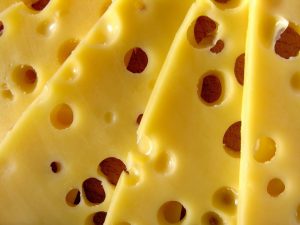 Keto, ketosis, and ketones are all related.
Keto, ketosis, and ketones are all related.
The state of ketosis can be attained by fasting, restricting carbohydrates, starvation, or intense exercises that go on for a long time.
Ketone bodies are three water-soluble molecules that are produced by the liver. They are made of fatty acids.
Ketosis kicks in after about 24 hours of starvation, after the depletion of carbohydrates from the body, or after performing in extreme lengthy sports that require a lot of energy.
During this time, the glucose that is stored in the liver for energy (in the form of glycogen) gets depleted.
Ketones form during the ketosis process and break down fat in the body for energy. The fat can be visceral (around the organs) and in other non-visceral parts (i.e. general fat and belly fat).
Our ancestors were probably in ketosis many times during the year, or even during the day. In the winter time they probably ate meats and fats, and in the summer time they ate high carbohydrate foods such as the fruits that were in season.
When they ate meats and fats, our ancestors probably were in ketosis, and their body adapted to burning fat for fuel. This was way before processed foods became the norm, and way before obesity became an issue.
Nowadays, some people continue to eat at least 5 times per day. They never give their body a chance to heal, digest properly, or allow for ketosis to occur. The benefits of ketosis go way beyond just weight loss. Being in a state of ketosis can help with general health and wellness, including reducing seizures in epileptic children.
For THe Keto Diet, The optimal grams of carbs are around 20 grams Per Day, But A More realistic expectation is Around 50.
You can get into ketosis by lowering your carb intake to about 20 grams (no more than 50 grams), and taking in medium grams of protein, while increasing your fat intake.
You want to eat good fats, such as those found in avocados, olive oil, coconut oil, seeds, and not refined fats and oils that are processed at high temperatures, i.e. soybean, canola, sunflower, and corn oil. Also, do not consume Trans fats at can give you strokes, such as margarine and fake spreads. They are not real foods.

There are other keto drink products you can use as well to help you get back into ketosis quickly after eating a lot of carbs, especially after celebrating birthdays, and holidays.
If you find products similar to this product in your local health food store, make sure that they have zero carbs, and don’t have any additives, such as sugars or other harmful elements. You want to make sure they’re made in the USA and held to high standards.
These products can usually be mixed with coconut milk, coffee and keto friendly shakes that are low in carbohydrates.
How Do You Know If You Are In Ketosis?
There are many telling signs that you’re in ketosis, such as feeling a bit tired (only at the beginning), and weight loss. Bad breath can also result from being in extreme ketosis.
Depending on how much glycogen you have stored in your liver from eating a lot of carbs prior to going on this diet, you may feel a bit of flu-like symptoms.
Don’t give up on the process if you feel the keto flu. The symptoms will subside in 24 hours or in a few days depending on the severity of your carb intake in the past, and especially if this is your first time going on a ketogenic diet.
You can reduce the effects of the keto flu considerably by supplementing with salt or electrolytes and with water (see the below section- What to drink).
You can measure whether you are in ketosis by purchasing ketone strip tests.
This is the easiest way to test for ketones in your body through the urine. A high amount of ketones means that your glycogen stores are low in your system, and your body is getting to be (or is) keto-adapted. This process is called fat-adaptation, or keto-adaptation.

The process of switching from using carbs for energy to completely using fat for energy can take anything from 1 or 2 days, to a week or two. If you go off ketosis for a day or so, it will be much easier to get back on it, compared to getting into ketosis for the first time.
The ketosis process will not only burn the belly fat, the thigh fat, or the “all over” your body fat, but it will also burn the visceral fat around your heart, in your arteries, in your fatty liver, and around your organs.
Even if you look skinny, your organs may be covered with fat because of the high carbohydrates + fats food choices that have accumulated throughout your life.
Being in ketosis will help you fight chronic diseases. In some cases a ketogenic diet has stopped the growth of cancerous tumors and has even reversed cancer, epilepsy, and other chronic conditions.
The Fasting Mimicking Diet (FMD) is another diet that can trigger ketosis. The benefits of FMD include rebooting the immune system and potentially avoiding chronic illnesses. You can read up on how to do the Fasting Mimicking Diet with avocados (or macadamia nuts), green superfood, and salt/electrolytes.
Here is what was concluded in a study on cancer, published in an article from the National Institute of Health:
“Preclinical results have demonstrated the safety and potential efficacy of using ketogenic diets in combination with radio-chemo-therapy to improve responses in murine cancer models.”

If you want to be very scientific about testing your ketones, you will need to commit to pricking your fingers to get a drop of blood.
One product that can help you with this is the Precision Xtra Blood Ketone Testing Kit.
You might be able to find it at your local pharmacy, or you can order it online.
These are products that can help you measure your ketones with absolute precision. They come with directions.
Intermittent Fasting Benefits – Is Fasting Good For You?
The benefits of fasting can be medical, physical, and mental.
There’s no doubt that intermittent fasting is very healing by itself, and more so when combined with the ketogenic diet. When these two meet, your body will turn into a fat burning machine.
Intermittent fasting alone can help your overall health and wellness. Here are the benefits of fasting:
- It will kick start your weight loss in a massive way!
- It will reduce the inflammation in your body.
- It will help your leaky gut get healthy.
- It will help you heal your body.
Grazing all day and eating every couple of hours is probably the worst thing you can do to your body.
This is especially true for people suffering from digestive disorders or from autoimmune diseases, such as:
– Rheumatoid arthritis.
– Lupus.
– Inflammatory bowel disease (IBD).
– Multiple sclerosis (MS).
– Type 1 diabetes.
– Guillain-Barre syndrome.
– Psoriasis.
Losing massive amounts of fat is triggered by ketosis + intermittent fasting.
Before you do intermittent fasting, make sure that your last meal is full of fats. This will help you sustain your energy for a few hours after you wake up the next day.
What Ketosis + Intermittent Fasting Does To Your Body and Brain?
In order to reap the health benefits of intermittent fasting to the fullest, you must stop eating all kinds of foods for about 16-18 hours (16 should be sufficient to get all the benefits). You will be taking in water and electrolytes only during your fast (see the section below).
Once you’re done with fasting, you will feast on foods rich with fats, low in carbohydrates, and medium in protein.
Your window of eating can last from 4 hours to 8 hours, but after that, you should be in intermittent fasting mode.
Intermittent Fasting Facts- What To Drink While You Fast?
Electrolytes are crucial salts that carry electrical charges to the cells in the body. Make sure to get sugar free electrolytes.

Electrolytes help the cells in the body stay stable and functional. This electrical charge is essential to the muscle contractions and to the nerves.
In addition, electrolytes can help reduce the effects of the keto induction phase (sometimes called the keto flu), where the body is trying to switch from carb burning to fat burning.
Some argue that you can take in liquids under 50 calories (i.e. tea, coffee, etc.), but it’s up to you.
Drink #1 – Water and electrolytes
- 1 gallon of water.
- Add about 1/2 teaspoon of Celtic sea salt. If you don’t like the taste of salt in your water, you can add sugar free electrolytes per recommended dosage on the packaging.
- Sip this water throughout the day.
- This drink will keep you hydrated and will help you replenish some of the depleted electrolytes from your body.
Note: Liquid electrolytes have amazing nutrients but may have a slight taste.
Drink #2 – Apple cider vinegar with lemon
- 8 oz. of water.
- Add 2 tablespoons of organic apple cider vinegar. The brand Bragg with The Mother works great. Shake the bottle before you add the vinegar to your drink.
- Add 1 tablespoon of organic lemon juice to break the taste of vinegar.
- You can add a touch of liquid Stevia to make the mix go down smoothly. Stevia usually does not affect the glucose levels in the blood. Some types may, but most don’t.
- Drink it once per day, and up to twice per day.
- Make sure to use a straw so that you don’t damage your teeth’s enamel.
Note: Stevia is the best choice for a sweetener, since it’s made from plant, keeps your blood sugar steady (even lowers it). It has a glycemic index of zero.
I would stick to water and electrolytes. Water is going to help you flush your system and you need about a gallon of it per day. If you must have your coffee in the morning, keep all your combined drinks under 50 calories, and do not add sugar, cream, or milk.
Avoid any coffee you buy from cafés because they may contain carbohydrates, especially if they have syrups and milk products added to them.
READ MORE: The 5 Popular Intermittent Fasting Protocols (Fasting Tips And Tricks).
Final Thoughts On The Ketogenic Diet and Intermittent Fasting
You can get amazing healing and weight loss results by going keto on a high fat, medium protein, low carb ketogenic diet and adding a form of intermittent fasting in between.
This diet has been scientifically proven to help chronic illnesses, reverse disease, and even shrink cancer cells and reverse cancer.
Once you add fats into the diet you will feel satiated and will not starve. Your body will also think that you’re feeding it and will work with you, not against you.
Your brain will thank you later because you are feeding it fat, which is one nutrient it loves over sugar.
It’s your turn now.
Have you ever tried the keto diet and may have had to deal with the keto flu? What about intermittent fasting? Did you see any positive or negative side effects? Share your thoughts below and let us know.




















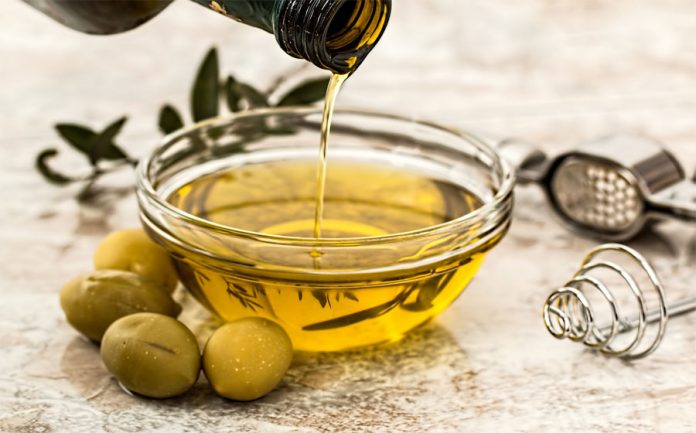
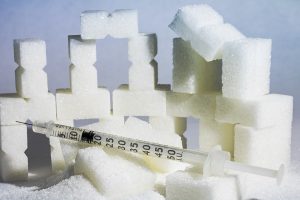
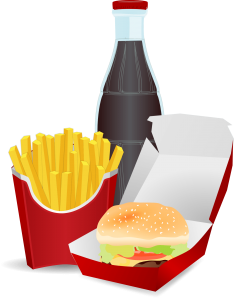
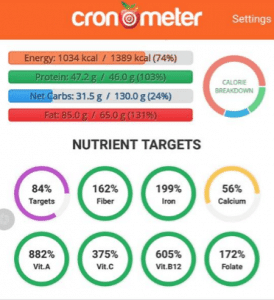

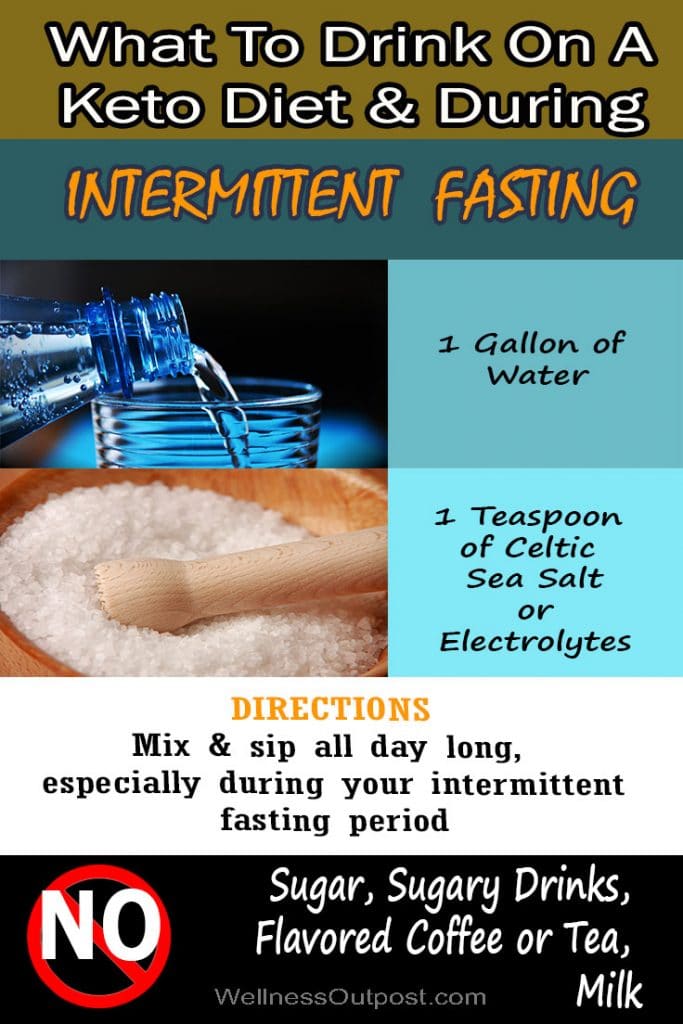








Thanks for all the helpful information
You’re very welcome Marcia.